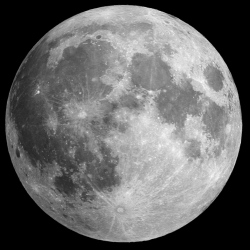
The Obama administration wanted to send humans to Mars. But the Trump administration wants to put them back on the moon first, and quickly. That ambition is inside internal documents reported by Politico on Thursday that describe what would be a dramatic shift in mission for NASA.
According to the documents, created by the transition team assigned to the agency, President Donald Trump’s advisers want NASA to send humans to the moon three years from now, nearly five decades since the last astronaut left his footprints there. NASA would focus on boosting human activity in the cislunar region, the space between the Earth and the moon, as opposed to venturing deeper into the solar system. The space agency’s main goal, they say, should be “the large-scale economic development of space.”
“NASA’s new strategy will prioritize economic growth and the organic creation of new industries and private sector jobs, over ‘exploration’ and other esoteric activities,” explains a summary of what’s next for NASA in the documents. “Done correctly, this could create a trillion-dollar per year space economy, dominated by America.”
It’s not surprising for a new administration to want to take NASA in a different direction so soon after its arrival in Washington. Eight years ago, Barack Obama canceled the Constellation program, created under George W. Bush, which planned to return humans to the moon by 2020. Obama believed the program was too expensive and that NASA had “lost focus,” especially as it began to wind down the space-shuttle program, the country’s pioneering pride and joy. He told NASA to put people on Mars by the 2030s, and lasso an asteroid somewhere along the way.
If the Trump administration’s picks for space-policy advisers are an indication, the country will remain on a long-term mission to Mars. Wrenching the idea of a Martian journey from the American public after two terms of successful NASA public-relations campaigns and Hollywood space movies would be a difficult exercise. Plus, there’s strong bipartisan agreement in Congress that the Mars deadline can’t move. But the next four to eight years may see an aggressive push for more movements in Earth’s backyard, where hundreds of satellites and the International Space Station reside.
Politico reports Trump advisers want “private American astronauts, on private space ships, circling the Moon by 2020.” That vision puts a lot of faith into private spaceflight companies that are developing and testing rockets capable of carrying payloads and people to low-Earth orbit. The company SpaceX especially stands to benefit from this ambition, because its CEO, Elon Musk, meets often with Trump as a member of the president’s advisory council of business leaders.
Increased investment in private-public partnerships in human spaceflight would actually be an expansion of Obama’s hopes for NASA. But spaceflight is blind to the origins of funding, both private and federal. SpaceX and Blue Origin, Jeff Bezos’s spaceflight company, are already behind schedule on perfecting the rockets they’ll let NASA use to carry astronauts into space next year. SpaceX has seen two rockets blow up in less than two years. The funding isn’t there yet, either; Trump has not announced a budget proposal for the next fiscal year, a process that usually begins in February.
“This is not a bad idea, but the timeline that’s implied in this article would be an unprecedented speed,” Casey Dreier, the director of space policy at the Planetary Society in California, said of the Trump advisers’ ambitions. “Just because you have private companies involved doesn’t mean you can ignore physics or the harsh environment of space.”
